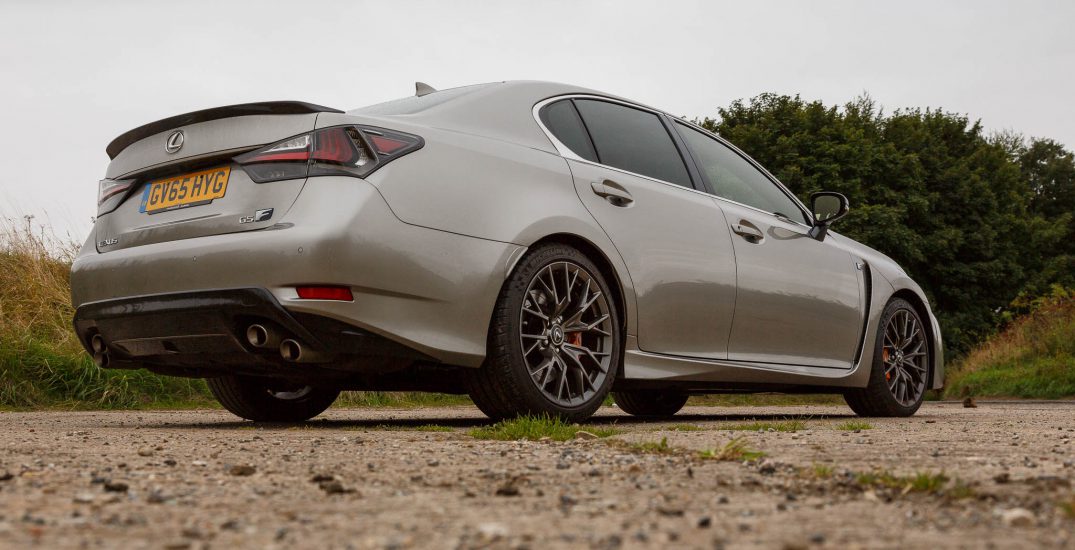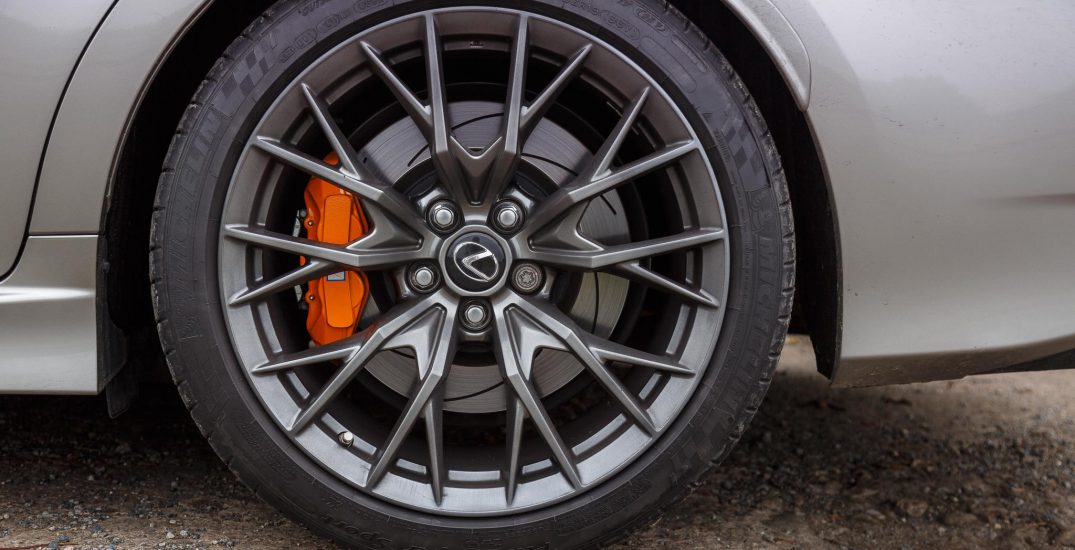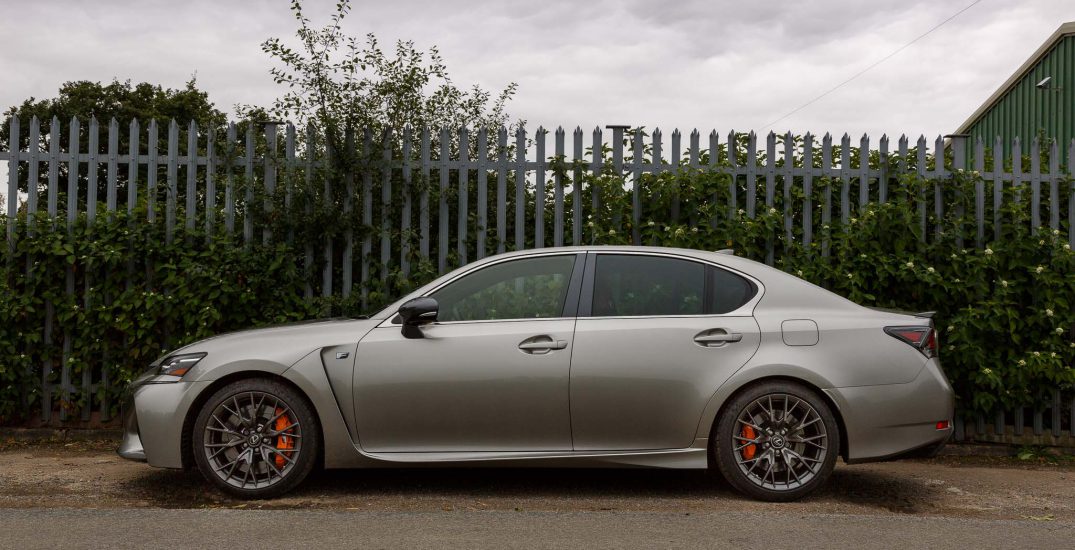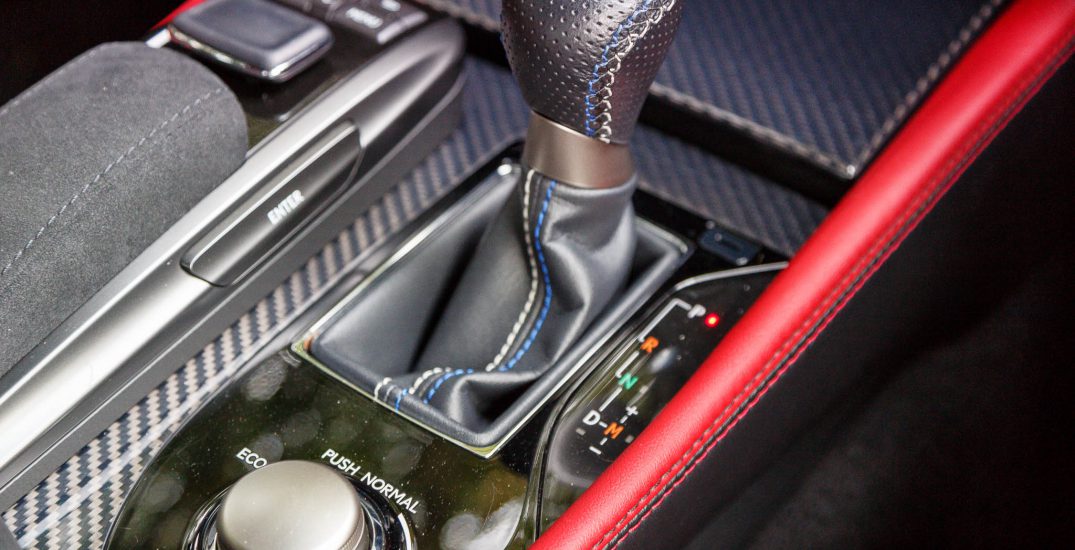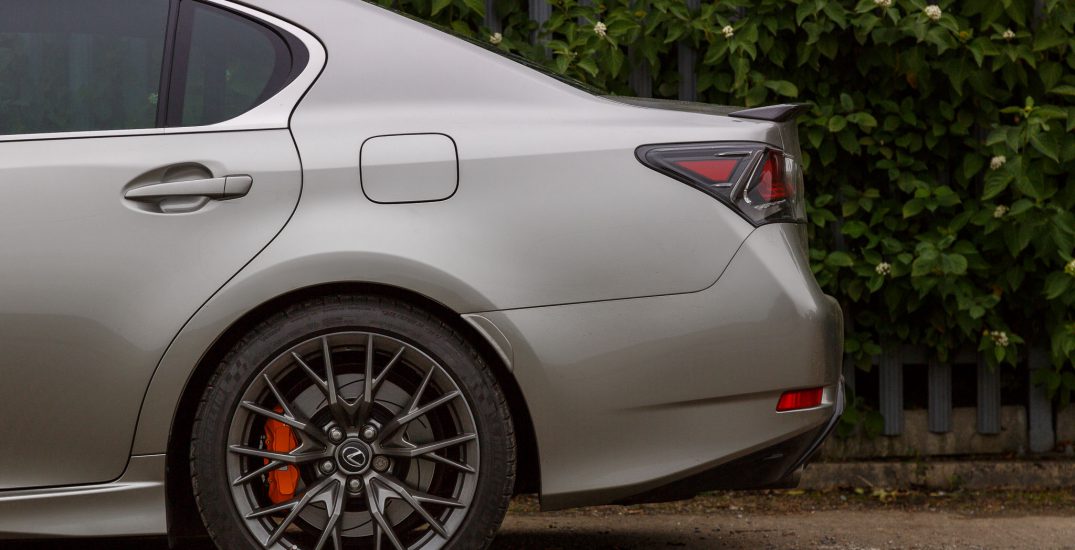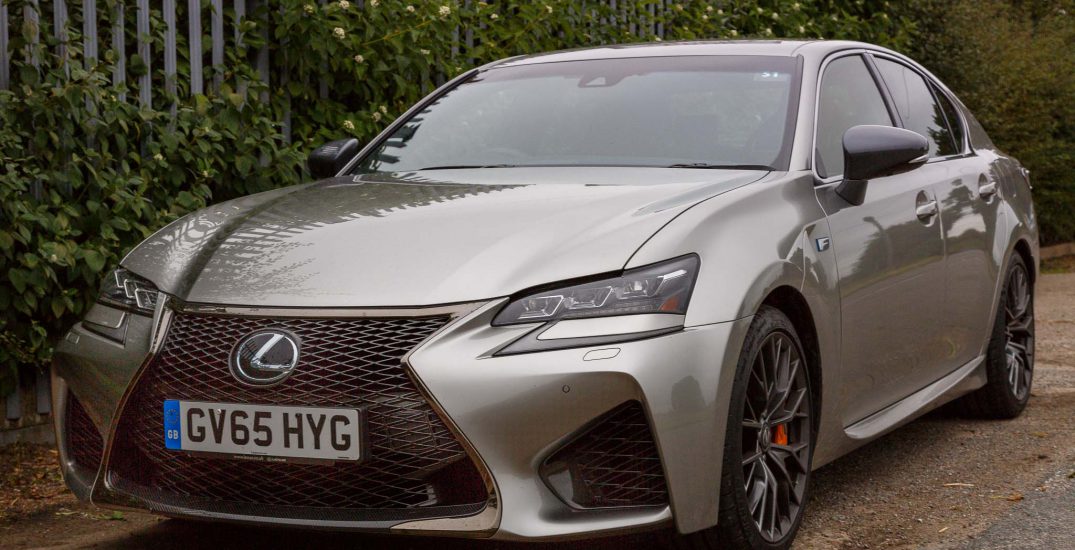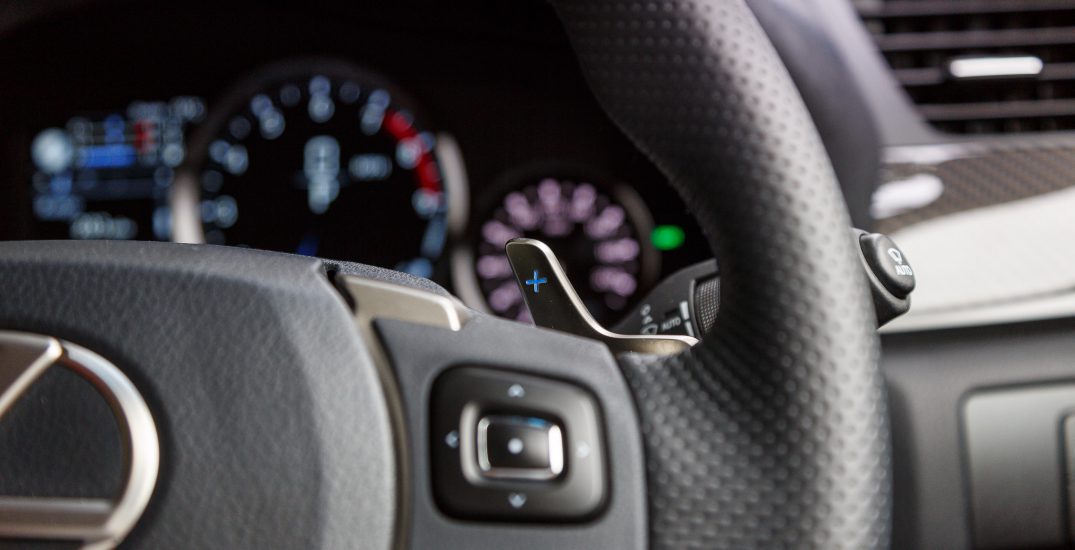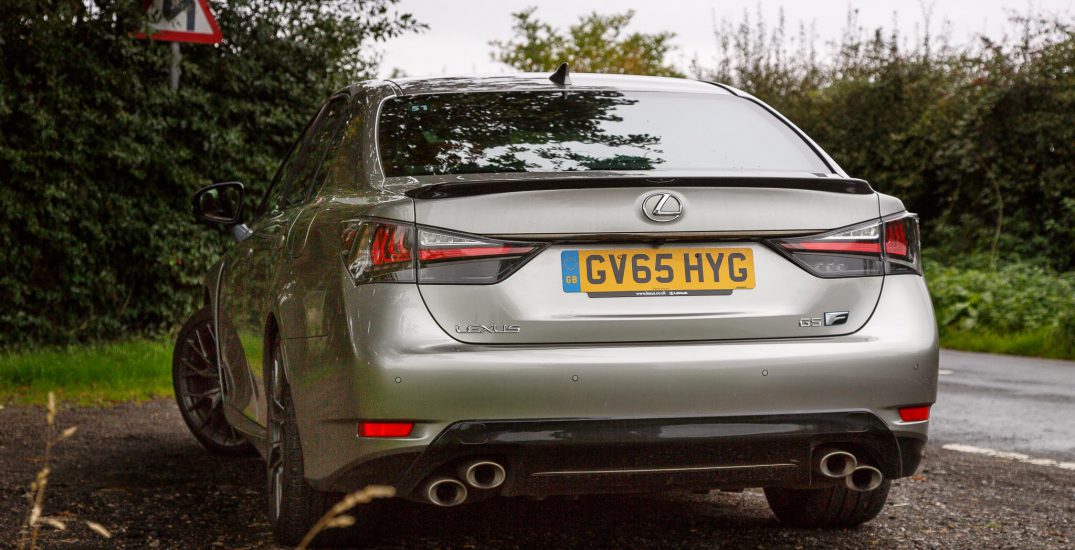Driven: 2016 Lexus GS F Review
I had a bit of time to test out the new Lexus GS F, and here are my thoughts on it.
What is the Lexus GS F all About?
Whenever Lexus adds an ‘F’ onto their car, you know that they mean business. From the Lexus IS F, to the Lexus LFA, all of them well regarded, especially the LFA, which even was crowned as the best car produced by Jeremy Clarkson.
Now, Lexus has decided to continue with the sports saloon fever, and introduces their latest creation, the GS F, a second high-performance saloon from Lexus, with the first being the IS F.
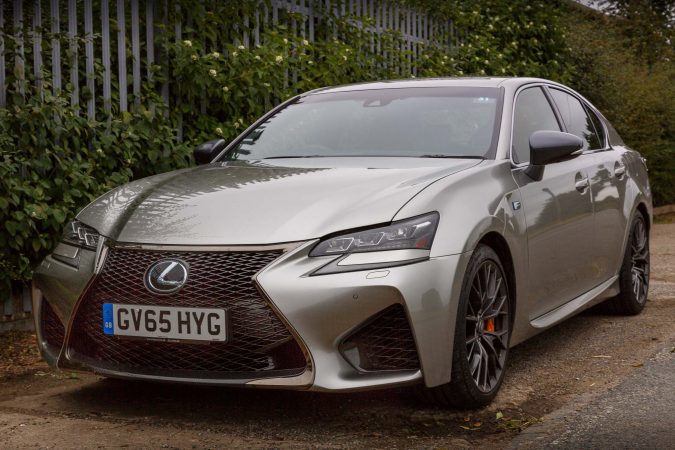
Unlike BMW, Mercedes, or Audi, Lexus has not gone with the discreet and subtle route for their performance variant. Compared to the normal GS, a lot has changed, and even from a distance, I can clearly identify the difference between a GS, and a GS F.
Before you get into the details, you immediately notice the width gain by the GS F, in fact, it is over 20 cm wider than the standard GS. This is no doubt due to the amount of offset the wheels have to give to house the massive brakes and fat tyres. This, paired with a slightly lower ride height gives the GS F an incredibly menacing stance.

Compared to the stock GS, everything on the GS F is exaggerated. That gigantic protruding front grille with complementary large vents to the sides, with unique, McLaren logo inspired daytime running lights, signature to Lexus.
Additionally, large side vents have been implemented to the front bumper, and the car follows a sharp, aggressive body line. Big orange calipers with bigger discs and 19 inch wheels finishes it off well. The rear has Lexus’s unique touch again, along with diagonally arranged circular quad exhaust tips.
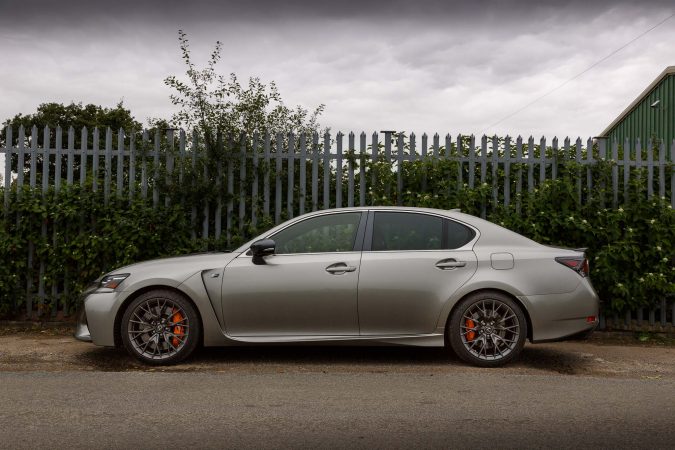
Powering the GS F is a similar unit found in the RC F, a newly developed high compression 32-valve DOHC 5.0 litre direct injected naturally aspirated V8 with dual VVT-i that’s good for 471 bhp at the top end and 530 Nm of torque midrange.
That, paired with an 8-speed semi-automatic gearbox driving the rear wheels allows the GS F to complete 0-60 mph run in just 4.6 seconds, to an electronically limited top speed of 168 mph. Remarkable for a car that weighs roughly 1.8 tons.

The engine achieves a combined mpg figure of 25.2 and puts out 260 grams of CO2 per km.
How Does it Drive?
Step in the car, press the stop start button and the chequered flag is down.
The GS F is powered by the same engine in the RC F, but while the RC F was a sports car, and it’s only normal to expect good driving characteristics from sports car, the GS F is a saloon and I had different expectations from it.
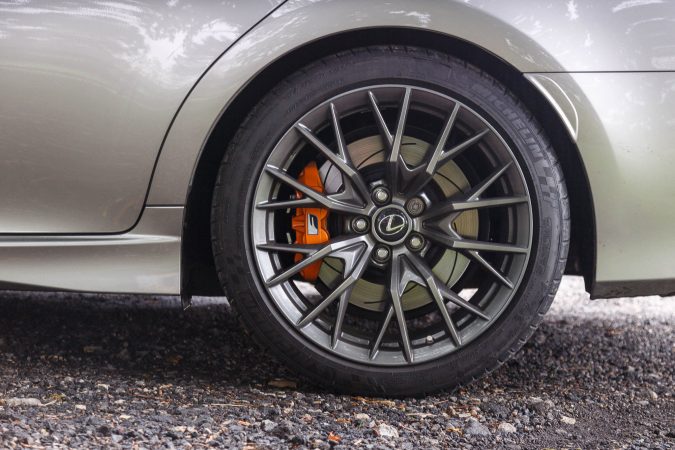
Now we’ve got that out of the way, to begin with, that engine inside there is a proper one. Even the sound of it entices all drivers alike, it has a deep, fruity growl that is quite refined. It revs very nicely, and goes up to 7,300 rpm. I must say that nothing still comes quite close to their LFA though.
The car has power in spades, and overtakes most cars nicely on the motorway. It’s a great cruiser as well, with interior noise being minimum. It’s not quite as fast as an M5, neither is it as bonkers as a Hellcat Charger, but 470 bhp is still nothing to scoff at. Reaching 62 mph in under 5 seconds while being so heavy is a feat too.
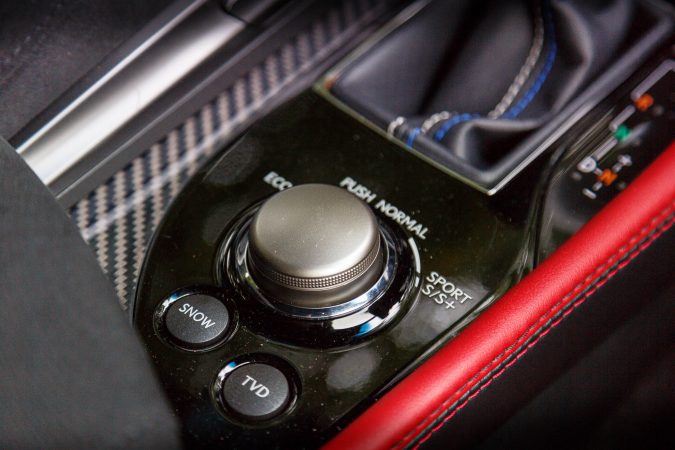
The GS F’s suspension is actually relatively stiff, although it depends on the driving mode you put it in. However, even on B-roads, it sticks to the ground really well. On S+, the most aggressive mode, the gear shifts are quick and crisp, acceleration is immediate, and it pounces into corners well.
Also, the engine is well tuned by Lexus I have to say. It has a broad torque range, in fact, it’s at peak torque (530 Nm) for 4,800rpm to 5,600rpm, that’s a staggering 800rpm range! This allows the GS F to slingshot out of corners fast. That engine note will also let everyone know that you are coming.
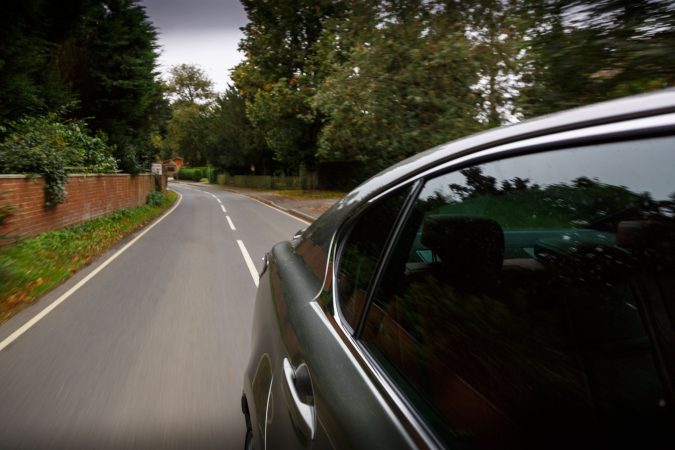
What is it Like Inside?
It’s a sports saloon outside, but a long distance cruiser at heart.
Our model is fitted with lovely vivid red semi-aniline leather, trimmed with carbon fibre pieces and hints of Alcantara. The epitome of a high performance grand-tourer. Despite being a Lexus, the centre console is kept clean, with minimal buttons to press, a plus in my opinion.
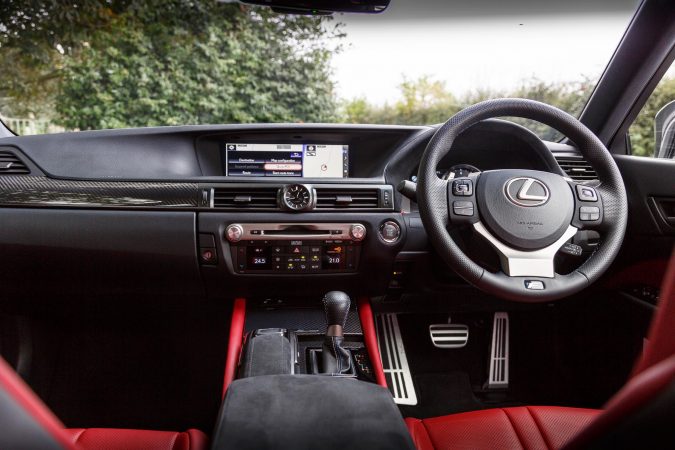
Most of the car’s functions are dealt with by the giant, clear 12.3 inch infotainment system encaved above the small analog clock between the two air conditioning vents. The steering is surprisingly minimalistic, being a normal, bulky 3-spoke design. The drive mode button is situated behind the gear lever.
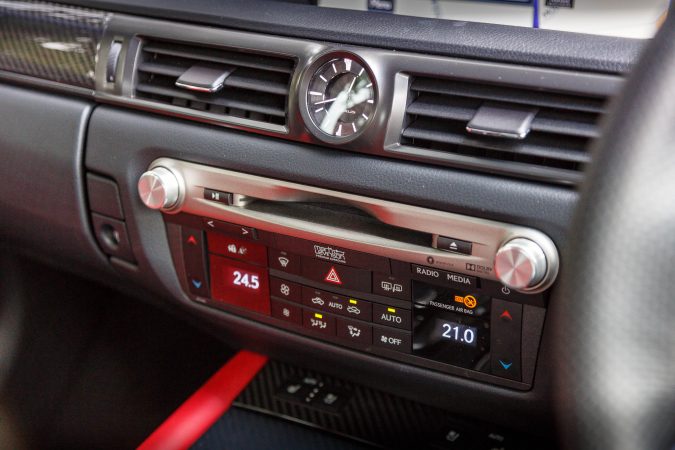
However, Lexus’s real party piece is the instrument cluster. It is a digital cluster that changes to reflect the driving mode, with eco being a unique blue spiral, normal being the simple tachometer, Sport being LFA-like, and Sport+ being a filling yellow bar with temperature monitors in the middle.
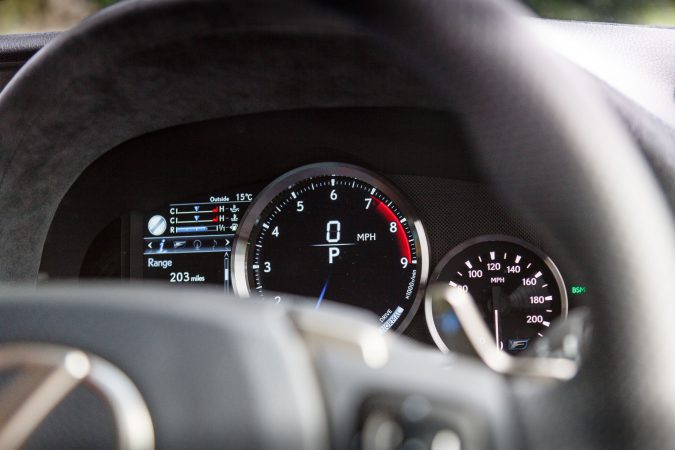
This being a normal-size saloon, the passenger space is ample along with good headroom. Additionally, the luggage compartment is pretty big at 520 litres, making the GS F a viable grocery getter. Worth noting that the GS F has a HUD for the driver as well, so one can focus on the road while driving.
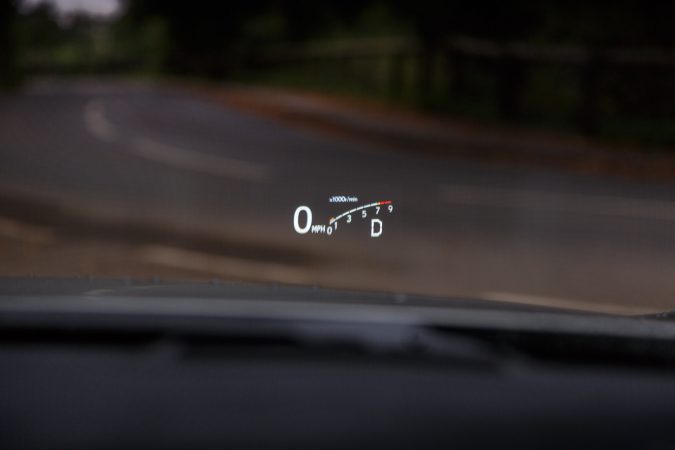
The Experience
The GS F was a phenomenal drive. Sure, it might not be the fastest sports saloon, but it’s really a car that gets you into a spirited drive. The gearbox feels like a good double-clutch unit in S+ mode, and the car feeds good info through the steering.
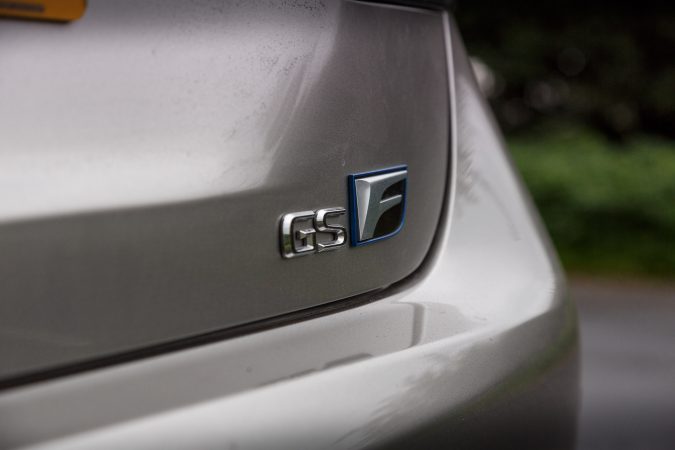
Let’s not leave out the amazing engine note it produces as well. Not quite the symphony the Lexus LFA was, but still encouraging for the drivers. I believe this is partly courtesy to Lexus’s Active Sound Control system.
Verdict
I’ve driven the RC F, and I’m not alone in thinking that this GS F drives better and sharper than it. However, even standalone, I can tell you that the Lexus GS F is a very good car.
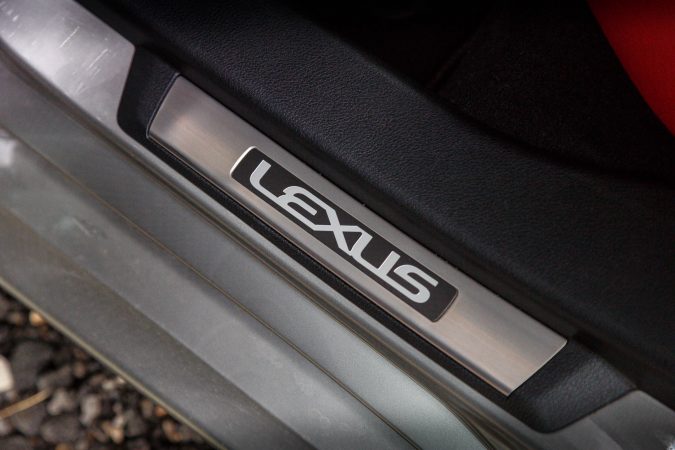
It has luggage space, it has passenger space, it has a strong engine, it drives well, it responds to aggressive driving well. All-in-all it’s truly a sports saloon.
Video Highlights
Specification
- Price: £69,995
- Engine: 5.0-litre petrol DOHC naturally aspirated V8 with dual-VVT-iE
- Power: 471 bhp
- Torque: 530 Nm
- Transmission: 8-speed Sports Direct Shift semi-automatic transmission
- 0-62mph: 4.6 seconds
- Top speed: 168 mph
- Weight: 1,790 kg
- Economy combined: 25.2 mpg
Author: Paul Hadley

